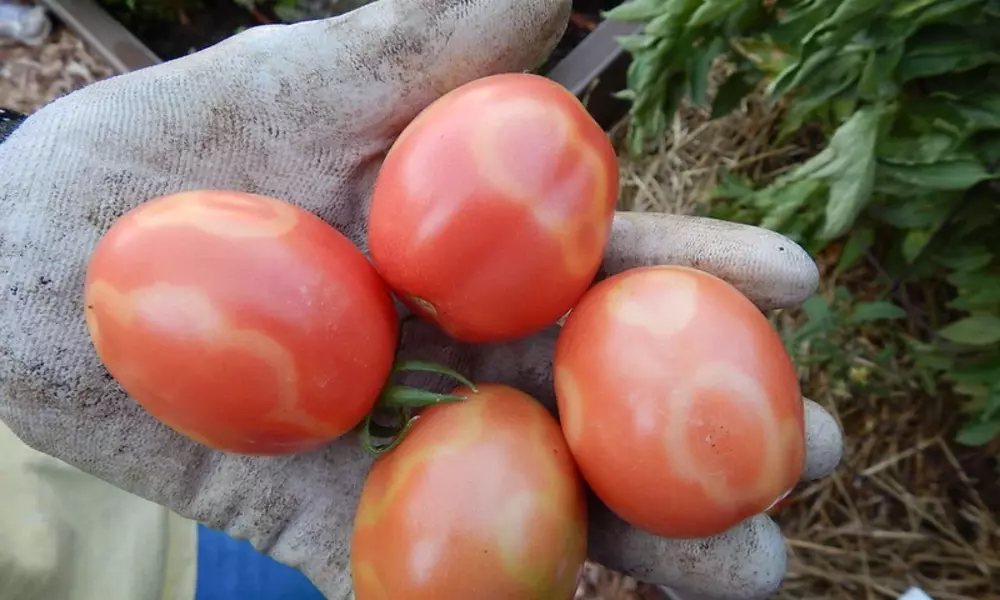Growing and caring for Arkansas Traveler tomatoes can be a rewarding experience for any avid gardener. However, like any other plant, these heirloom tomatoes come with their fair share of challenges.
In this guide, we will address the common problems that gardeners often encounter while cultivating Arkansas Traveler tomatoes.
Through extensive research and practical experience, we have uncovered effective solutions that will help you overcome these hurdles and ensure a bountiful harvest.
Our aim is to provide you with reliable information and actionable advice, empowering you to nurture healthy and thriving Arkansas Traveler tomato plants. With our expert guidance, you can confidently navigate the potential obstacles and achieve the satisfying results you desire.
Let us delve into the fascinating world of Arkansas Traveler tomatoes and unlock the secrets to successful cultivation, leaving you with our well-informed opinion on their unique qualities.
About Arkansas Traveler Tomato Plants
Arkansas Traveler tomato plants are indeterminate vines that can reach a height of 4 to 6 feet.
They are highly adaptable and can thrive in various climates and growing conditions. This variety is a favorite among gardeners for its disease resistance and ability to produce an abundant harvest.
History of the Arkansas Traveler Tomato
The Arkansas Traveler tomato has a fascinating history. It originated in the Ozark Mountains region of Arkansas and has been cultivated for over a century. This heirloom variety has stood the test of time and continues to captivate gardeners with its exceptional flavor.
Characteristics of the Arkansas Traveler Tomato
Appearance: Arkansas Traveler tomatoes are medium-sized, usually weighing around 6 to 8 ounces. They have smooth skin and come in a vibrant pink color.
- Texture: The flesh of Arkansas Traveler tomatoes is juicy and tender, making them ideal for both fresh eating and cooking.
- Flavor: These tomatoes are known for their rich, well-balanced flavor. They offer a sweet and tangy taste with a hint of acidity.
Health Benefits of the Arkansas Traveler Tomato
Arkansas Traveler tomatoes are not only delicious but also packed with essential nutrients. They are a good source of potassium, antioxidants, and vitamins A and C.
Incorporating these tomatoes into your diet can contribute to a healthy lifestyle and potentially offer various health benefits, including improved immune function and reduced risk of chronic diseases.
Growing Them at Home
Planting Zones:
Arkansas Traveler tomatoes thrive in USDA planting zones 5-11. They prefer a warm and sunny climate, but with proper care, they can also be grown in cooler regions.
Size and Spacing:
When planting Arkansas Traveler tomatoes, give each plant sufficient space to grow. Space them about 24 to 36 inches apart to ensure proper airflow and prevent overcrowding.
Pollination:
Arkansas Traveler tomatoes are self-pollinating, which means they have both male and female reproductive parts.
However, wind or insects can aid in the pollination process and increase fruit production. To encourage natural pollination, avoid using excessive pesticides that may harm beneficial insects.

Caring for Your Arkansas Traveler Tomato Plants
-
Sunlight:
Arkansas Traveler tomatoes require at least 6-8 hours of direct sunlight per day for optimal growth and fruit production. Pick a spot in your garden that gets plenty of sunlight.
-
Soil:
These tomatoes prefer well-draining soil rich in organic matter. Amend the soil with compost or aged manure before planting to improve its fertility and drainage capabilities.
-
Watering:
Consistent and adequate watering is essential for Arkansas Traveler tomato plants. Depending on the weather, water deeply once or twice per week. Avoid overwatering to prevent root rot.
-
Fertilizing:
Feed your Arkansas Traveler tomato plants with a balanced fertilizer high in phosphorus and potassium. Apply the fertilizer according to the package instructions, usually every 3-4 weeks during the growing season.
-
Pruning and Pinching:
Pruning helps maintain plant health and productivity. Remove suckers (side shoots) that emerge from leaf axils, as they divert energy from the main stem.
Pinch off the top of the plant when it reaches the desired height to encourage fruit production and better airflow.
-
Possible Diseases and Pests:
Arkansas Traveler tomatoes are relatively resistant to many common tomato diseases. However, they can still be susceptible to certain issues such as:
Common diseases affecting Arkansas Traveler tomato plants
Early Blight: Characterized by dark spots on leaves and fruits, early blight can be managed by removing infected plant parts and applying fungicides.
Septoria Leaf Spot: Identified by circular spots with dark centers and yellow halos, septoria leaf spots can be controlled by practicing good sanitation and using fungicides if necessary.
Fusarium and Verticillium Wilts: These soil-borne diseases cause wilting and decline. Use disease-resistant varieties and rotate crops to minimize the risk.
Common pests affecting Arkansas Traveler tomato plants
Tomato Hornworm: Large green caterpillars that can defoliate plants; handpicking and using organic insecticides can help manage them.
Aphids: Small insects that feed on plant sap; use insecticidal soaps or introduce beneficial insects like ladybugs to control aphid populations.
Tomato Fruitworm: Worms that bore into tomatoes, causing damage; pick off affected fruits and use organic insecticides if necessary.
When to Harvest Arkansas Traveler Tomatoes
Arkansas Traveler tomatoes are typically ready for harvest around 70-80 days after transplanting. They should be picked when the fruits are fully colored and slightly soft to the touch.
Harvesting too early may result in a lack of sweetness while waiting too long can lead to overripeness and potential splitting.
Where to Buy Arkansas Traveler Tomato Seeds
You can purchase Arkansas Traveler tomato seeds from various sources, including reputable online seed companies, local nurseries, or garden centers. Look for organic or heirloom seed options to ensure the best quality and authenticity.

Arkansas Traveler Tomato Recipes
Here are a few delightful recipe ideas that showcase the delicious flavor of Arkansas Traveler tomatoes:
Caprese Salad Skewers:
- Skewer Arkansas Traveler tomatoes, fresh basil leaves, and bite-sized mozzarella balls.
- Add salt and pepper and drizzle with balsamic glaze.
- Serve as a colorful and refreshing appetizer.
Grilled Tomato Bruschetta:
- Slice Arkansas Traveler tomatoes and brush them with olive oil.
- Grill the tomato slices until slightly charred.
- Place the grilled tomatoes on toasted baguette slices and top with minced garlic, fresh basil, and a sprinkle of sea salt.
Tomato Galette:
- Prepare a homemade or store-bought pie crust and roll it out into a circle.
- Arrange thinly sliced Arkansas Traveler tomatoes on the crust, leaving a border.
- Sprinkle with salt, pepper, and your choice of herbs (e.g., thyme, oregano).
- Fold the edges of the crust over the tomatoes and bake until golden brown.
Conclusion
Growing and caring for Arkansas Traveler tomatoes can be a rewarding experience for any gardener. By following the steps outlined in this comprehensive guide, you’ll be well-equipped to cultivate healthy plants, harvest delicious tomatoes, and enjoy the rich flavors they offer.
Embrace the journey of growing your own Arkansas Traveler tomato and savor the bountiful rewards they bring to your garden and table.
FAQs
Q1. Is Arkansas Traveler a good tomato?
Yes, Arkansas Traveler is considered a good tomato variety. It is highly regarded for its delicious taste, resilience, and disease resistance.
Q2. How big does an Arkansas traveler tomato get?
Arkansas Traveler tomatoes typically grow to medium size, weighing around 6 to 8 ounces.
Q3. What do Arkansas Traveler tomatoes taste like?
Arkansas Traveler tomatoes have a rich, well-balanced flavor that is both sweet and tangy, with a hint of acidity.
